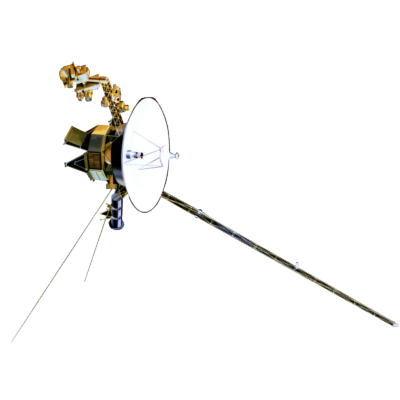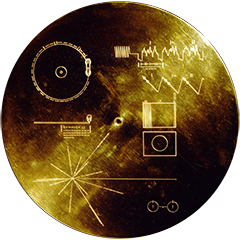Voyager LECP Data Analysis Handbook
Calibrations and Channel Definitions
December 8, 1978
Dr. Thomas P. Armstrong
Department of Physics
University of Kansas
Lawrence, KS 66045
Dear Tom:
Rate tests for LEPT detectors D2, D3, D4, D5 were run the other day. Unlike the previous set of data I sent you for detectors D1 and D2, these were not run as coincidences but as singles rates observed on Channel 42.
As you can see from the enclosed data, the rate curves exhibit a strange upturn after ~200 KHz. The only normal-looking curve is detector D3. At this point, I have no explanation for this effect. In general, though, I would say that the data is valid up through ~150 KHz.
If you want some further tests run, let me know.
Sincerely,
J. W. Kohl
D2 Rate Test

| Input (KHz) | D2 (cnts/3 sec) |
D2 (KHz) |
| 1.06 | 3136 | 1.05 |
| 2.01 | 5888 | 1.96 |
| 4.03 | 11520 | 3.84 |
| 6.09 | 17150 | 5.72 |
| 8.04 | 22250 | 7.42 |
| 10.7 | 29184 | 9.73 |
| 20.7 | 51200 | 17.1 |
| 39.5 | 81920 | 27.3 |
| 59.9 | 100352 | 33.5 |
| 80.7 | 108544 | 36.2 |
| 98.0 | 110592 | 36.9 |
| 202 | 122880 | 41.0 |
| 403 | 163040 | 54.6 |
| 565 | 188416 | 62.8 |
| 729 | 204800 | 68.3 |
D3 Rate Test

| Input (KHz) | D3 (cnts/3 sec) |
D3 (KHz) |
| 1.19 | 3520 | 1.17 |
| 2.05 | 6016 | 2.01 |
| 3.01 | 8704 | 2.90 |
| 4.24 | 12288 | 4.10 |
| 6.06 | 17408 | 5.80 |
| 8.19 | 23040 | 7.68 |
| 11.3 | 31232 | 10.4 |
| 20.6 | 53248 | 17.7 |
| 30.1 | 73728 | 24.6 |
| 40.5 | 92160 | 30.7 |
| 60.1 | 118784 | 39.6 |
| 79.3 | 139264 | 46.4 |
| 97.7 | 151552 | 50.5 |
| 196 | 172032 | 57.3 |
| 294 | 172032 | 57.3 |
| 393 | 167936 | 56.0 |
| 588 | 163840 | 54.6 |
| 727 | 159744 | 53.2 |
D4 Rate Test

| Input (KHz) | D4 (cnts/3 sec) |
D4 (KHz) |
| 1.05 | 3136 | 1.05 |
| 2.06 | 6016 | 2.01 |
| 3.96 | 11520 | 3.84 |
| 6.01 | 17408 | 5.80 |
| 8.06 | 23040 | 7.68 |
| 10.4 | 29184 | 9.73 |
| 20.1 | 53248 | 17.7 |
| 39.5 | 94208 | 31.4 |
| 60.2 | 124928 | 41.6 |
| 78.6 | 143360 | 47.8 |
| 102 | 159744 | 53.2 |
| 210 | 163840 | 54.6 |
| 400 | 147456 | 49.2 |
| 547 | 147456 | 49.2 |
| 726 | 163840 | 54.6 |
| 517 | 147456 | 49.2 |
| 309 | 151552 | 50.5 |
D5 Rate Test
Figure (restoration in progress; please check back)
| Input (KHz) | D5 (cnts/3 sec) |
D5 (KHz) |
| 1.03 | 3072 | 1.02 |
| 2.09 | 6100 | 2.03 |
| 3.94 | 11264 | 3.75 |
| 6.07 | 17408 | 5.80 |
| 8.01 | 22528 | 7.51 |
| 10.6 | 29184 | 9.73 |
| 20.2 | 51200 | 17.1 |
| 39.4 | 83968 | 28.0 |
| 60.3 | 102400 | 34.1 |
| 79.2 | 112640 | 37.5 |
| 100 | 114688 | 38.2 |
| 210 | 98304 | 32.7 |
| 389 | 114688 | 38.2 |
| 722 | 163840 | 54.6 |
| 564 | 139264 | 46.4 |
| 270 | 100352 | 33.5 |
| 201 | 100352 | 33.5 |
| 98304 | 32.7 | |
| 132 | 112640 | 37.5 |
| 100 | 114688 | 38.2 |
Return to Calibrations main page.
Return to Voyager
LECP Data Analysis Handbook Table of Contents.
Return to Fundamental
Technologies Home Page.
Updated 8/9/19, Cameron Crane
VOYAGER 1 ELAPSED TIME
*Since official launch
September 5, 1977, 12:56:00:00 UTC
VOYAGER 2 ELAPSED TIME
*Since official launch
August 20, 1977, 14:29:00:00 UTC
QUICK FACTS
Mission Duration: 40+ years have elapsed for both Voyager 1 and Voyager 2 (both are ongoing).
Destination: Their original destinations were Saturn and Jupiter. Their current destination is interstellar space.



